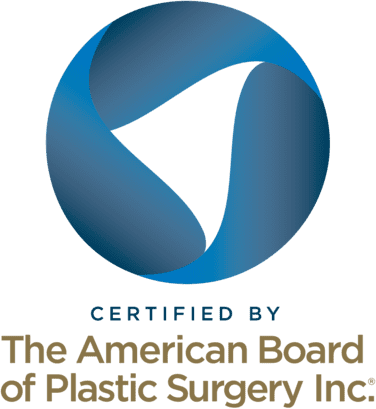Non-Binary Surgery Options: What’s Right For You?
Non-binary surgery offers an essential opportunity for patients on their gender identity journey looking for care that will align with their physical appearance. Unlike male-to-female or female-to-male transitions, non-binary surgery recognizes that many people may not fit into traditional gender categories. With options like chest contouring, facial surgery, or genital nullification, these procedures assist individuals in addressing gender dysphoria and ultimately experience gender euphoria.
Please note that not all non-binary people need surgery to affirm their gender. Not all non-binary people experience gender dysphoria with their body.
What is Non-Binary Surgery?
Non-binary surgery encompasses a range of procedures aimed at helping patients achieve physical traits that truly reflect their gender identity. These surgeries are thoughtfully personalized, offering options such as non-binary top surgery, bottom surgery, facial surgery, and body contouring. This approach celebrates the idea that gender is a personal journey. It encourages collaboration with surgeons to craft care plans that reflect each patient’s unique needs.
Non-binary surgery describes a series of procedures that were designed to reflect the needs of many non-binary folks: a surgical result that transcends the canon of gender-affirmation that makes someone look more like a “man” or a “woman.” Not all non-binary patients necessarily want “non-binary surgery” to affirm their gender. Rather, these are a list of options that our surgeons have developed to meet the needs that many of our non-binary patients have expressed. They include:
Non-Binary Surgical Options
- Non-Binary Top Surgery: Non-binary top surgery encompasses a list of techniques that can give individuals a more androgynous chest appearance. Patients who want a flat chest can opt for less traditional nipple placement and nipple-areola dimension options, or to just have their nipples removed altogether. Patients who still want some volume left can opt for an aggressive breast reduction. Some patients describe having a smaller chest as giving them a more “gender-fluid” appearance: their breasts can be more easily concealed when desired.
- Breast Augmentation: Patients interested in having larger breasts can have breast implants placed. In some, rarer cases, a fat transfer may be appropriate to augment the breasts or accentuate cleavage. This procedure helps individuals align their bodies with their true gender identity. The surgeons are dedicated to connecting with patients, taking the time to understand their unique aspirations—whether enhancing curves for a fuller look or creating a more balanced silhouette. By providing personalized options, this procedure can help ease feelings of dysphoria, empowering individuals to feel confident in their skin.
- Bottom Surgery Overview: Bottom surgery offers an array of options designed to help harmonize physical characteristics with gender identity. These procedures include vaginoplasty, where a vaginal canal and external vulvar structures are created, and vulvoplasty (or vulvaplasty), which focuses on constructing external vulvar structures without the formation of a vaginal canal. Metoidioplasty and phalloplasty work on building a penis using existing genital tissue or donor tissue, catering to each person’s unique goals and preferences. Some individuals may also consider genital or gender nullification procedures to achieve a more neutral appearance, helping to address feelings of gender dysphoria or enhance their sense of physical alignment. The variety of options showcases the importance of personalized care, celebrating the distinct ways non-binary individuals can explore their journey. Regardless of whether you want a full nullification procedure, patients can have their natal genital issue removed through orchiectomy, scrotectomy, vaginectomy, or other procedures.
- Facial Surgery: This surgical approach helps patients align their facial features with their gender identity, celebrating the beauty of diverse gender expressions. Procedures are designed with personal goals and experiences of gender dysphoria in mind. Techniques such as jawline contouring, jawline augmentation, nose reshaping, and cheek augmentation provide customized options for enhancing facial harmony while nurturing authenticity and confidence.
- Body contouring: At the Gender Confirmation Center (GCC), patients can choose from liposuction, skin tightening, fat transfer, and silicone implants to help alter or sculpt the shape of their bodies. Body contouring can target a specific part of the body, like persistent fat deposits that do not go away with consistent exercise and diet changes, or aim to alter the overall frame and dimensions of the body.
Frequently Asked Questions:
The following questions are what we commonly hear from non-binary patients inquiring about gender-affirming surgery.
Do I need to take hormones for non-binary surgery?
At the Gender Confirmation Center (GCC), we do not require that patients take hormone replacement therapy (HRT) to be a candidate for surgery. For those who are currently taking hormones, waiting a year or two before undergoing surgery may help you optimize your results.
Please note that many insurance providers require that patients be on continuous HRT for at least a year to cover procedures like breast augmentation, body contouring, facial surgery, and bottom surgery. Most insurance providers do not require HRT to cover chest reduction top surgery. For more insurance information, click here.
How do I find a qualified surgeon for non-binary surgeries?
We encourage patients to find board-certified surgeons who specialize in caring for non-binary individuals. It is great to look for surgeons who have a strong history of successfully performing gender-affirming procedures and truly understand the needs of non-binary patients. Additionally, reaching out to support groups, online communities, or others who have undergone similar surgeries for recommendations can be helpful.
Can I breast/chestfeed after top surgery?
Patients who have breast-reduction surgery can often still breastfeed, though they may need to supplement with formula. Some patients have reported successfully chestfeeding following extensive breast reduction and inverted-T procedures; however, this does not apply to most types of breast or chest reconstruction. Individuals receiving nipple grafts do not have their nipples linked to milk ducts, as milk ducts are often removed during these procedures. If breastfeeding or chestfeeding is a priority for you, we encourage you to discuss this in a free consultation with one of our board-certified surgeons.
Can I preserve the vaginal opening if I undergo metoidioplasty and phalloplasty?
At the GCC, Dr. Zara Ley (she/her/they) only requires patients to undergo a vaginectomy (removal of the vaginal canal) if they are undergoing a primary urethral lengthening (PUL). A PUL allows someone born with a vulva to more easily urinate while standing. Since a PUL with vaginal preservation is associated with a high risk of urinary complications, Dr. Ley now requires a vaginectomy to be performed with a PUL. For metoidioplasty and phalloplasty procedures performed without a PUL, patients can preserve their vaginal canal.
Can I smoke or drink before or after surgery?
Patients must follow a policy of no smoking and no nicotine consumption for three weeks before and after surgery. This helps ensure a smoother recovery and reduces the chances of issues like nipple graft failure and anesthesia complications. While nicotine is the main concern, smoking marijuana can also affect healing and anesthesia. We recommend considering edibles or CBD as alternatives and encourage open communication with your surgeon to keep the healing process on track. Additionally, we suggest avoiding alcohol for one week before and after surgery and steering clear of it while taking prescription pain medication for a safe recovery.
Insurance and Costs
Access to gender-affirming surgery can truly transform lives, and for many patients, securing insurance coverage is essential to accessing this medically necessary care. Many insurance providers now offer coverage for these surgeries, but the details can vary. Generally speaking, if your provider offers gender benefits, you will need to provide a support letter from a licensed mental health provider to justify coverage. We encourage you to reach out to your insurance company to ask about their policies, requirements, and limitations for covering gender-affirming surgery. At the GCC, our insurance advocacy team has a 90% success rate in helping interested patients get coverage for their procedures.
Additional Resources
Request a Free Surgical Consultation Today.
All virtual and in-person consultations with our board-certified surgeons are free. Once you fill out this form, our patient care team will reach out and guide you through every step to get to surgery.




